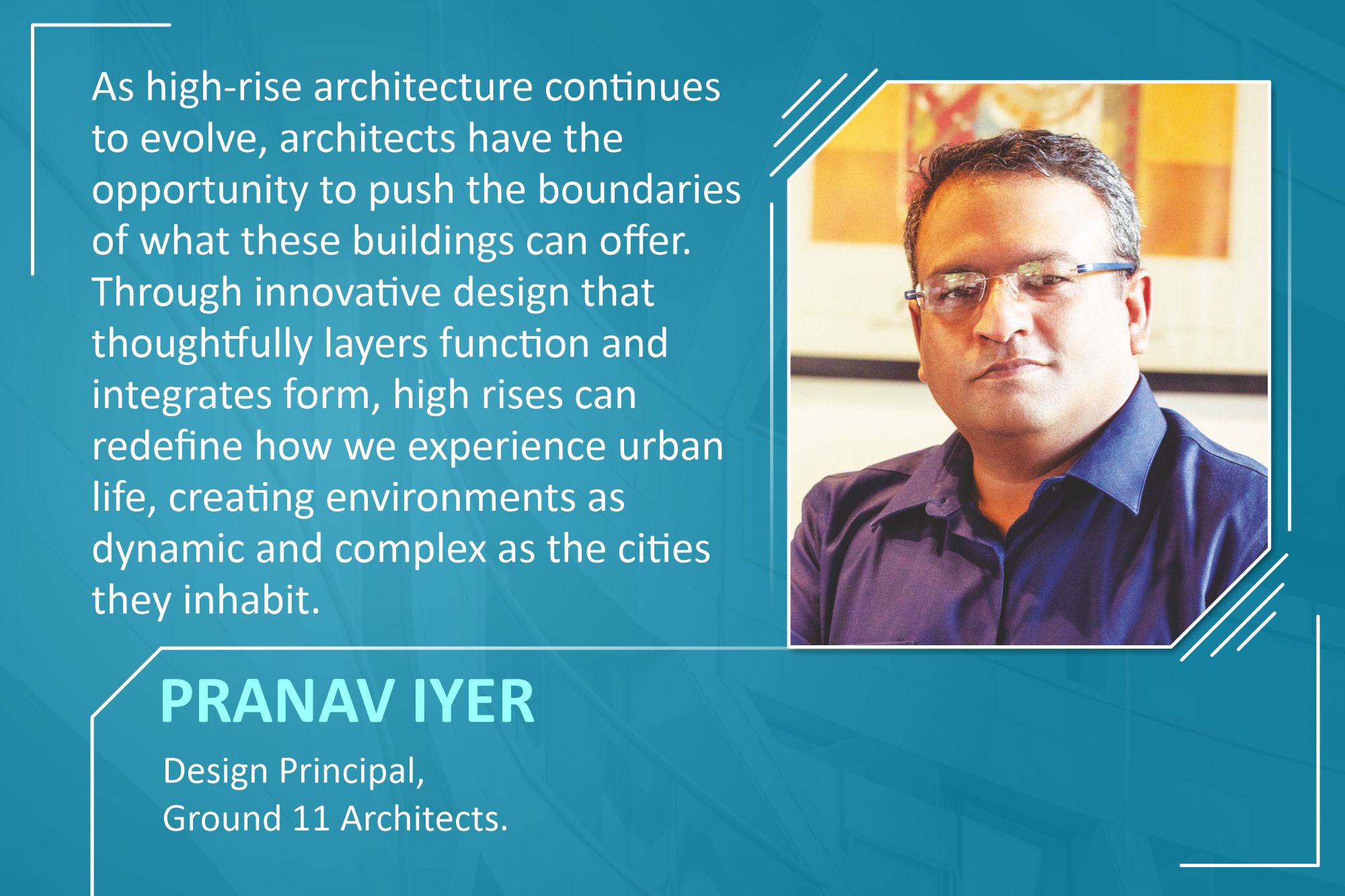Reimagining high-rise architecture

“As high-rise architecture continues to evolve, architects have the opportunity to push the boundaries of what these buildings can offer. Through innovative design that thoughtfully layers function and integrates form, high rises can redefine how we experience urban life, creating environments as dynamic and complex as the cities they inhabit.”
As cities grow denser, high-rise buildings have become a defining symbol of urban development. The towering structures that punctuate skylines are no longer mere containers of residential or commercial units; they represent a complex and dynamic interplay between function and form, offering a profound opportunity for architects to rethink the essence of how spaces can be organised and experienced vertically. The core challenge lies in layering multiple functions while maintaining a cohesive form, allowing the structure to be an integrated part of the city fabric rather than a standalone monolith.
At the heart of this discourse is the evolving definition of “function” in high-rise buildings. A century ago, skyscrapers were primarily designed for either office or residential use, with little overlap. Today, we see the emergence of mixed-use high-rises that incorporate everything from residential units and corporate offices to hotels, retail spaces, cultural venues, and public areas. This layering of diverse functions within a single structure requires rethinking how spaces interact with one another, how they are accessed, and how they serve the broader community.

Layering of function: A vertical city in microcosm
In its modern incarnation, a high-rise building functions as a vertical city. It represents the complex stratification of public, semi-public, and private spaces within a limited footprint. The challenge is in creating an environment where these layers do not merely coexist but synergise. For instance, integrating retail or cultural spaces at the base of a building can create a vibrant pedestrian experience. In contrast, office spaces layered above can provide the necessary separation for focused work environments. Residential or hospitality spaces above this can take advantage of elevated views and quieter atmospheres. The interplay between different uses requires a thoughtful approach to circulation and connectivity. This is particularly critical in mixed-use buildings where the diversity of occupants—workers, residents, visitors—demands an intuitive flow that avoids congestion and confusion.
Integration of form: The aesthetic response to layered function
While the function of a high-rise is increasingly multifaceted, the integration of form allows these functions to coexist harmoniously and aesthetically pleasingly. A successful design is one where the layering of function is reflected in the building’s form without appearing fragmented. While designing high rises, architects must address challenges such as wind loads, solar exposure, and thermal performance while crafting a building that engages with its surroundings. One way to create a high-rise that does not dominate its context is through adaptive facades, which respond to internal programmatic requirements and external environmental factors. Additionally, materials and structural elements can be manipulated to create a sense of lightness or movement, transforming the building into an active participant in the cityscape.
The symbiotic relationship between form and function
Ultimately, the success of a high-rise lies in the symbiotic relationship between its function and form. It is not enough for a building to simply layer different uses; those uses must inform the design in a way that creates cohesion rather than division. The building’s form should emerge from its functional requirements yet transcend them to offer a structure that is aesthetically compelling and contextually sensitive. In this way, a high-rise structure can serve as a microcosm of the city—layered, multifunctional, and integrated into the very fabric of urban existence.
For more details, visit: https://www.instagram.com/studiog11/?hl=en
Cookie Consent
We use cookies to personalize your experience. By continuing to visit this website you agree to our Terms & Conditions, Privacy Policy and Cookie Policy.










